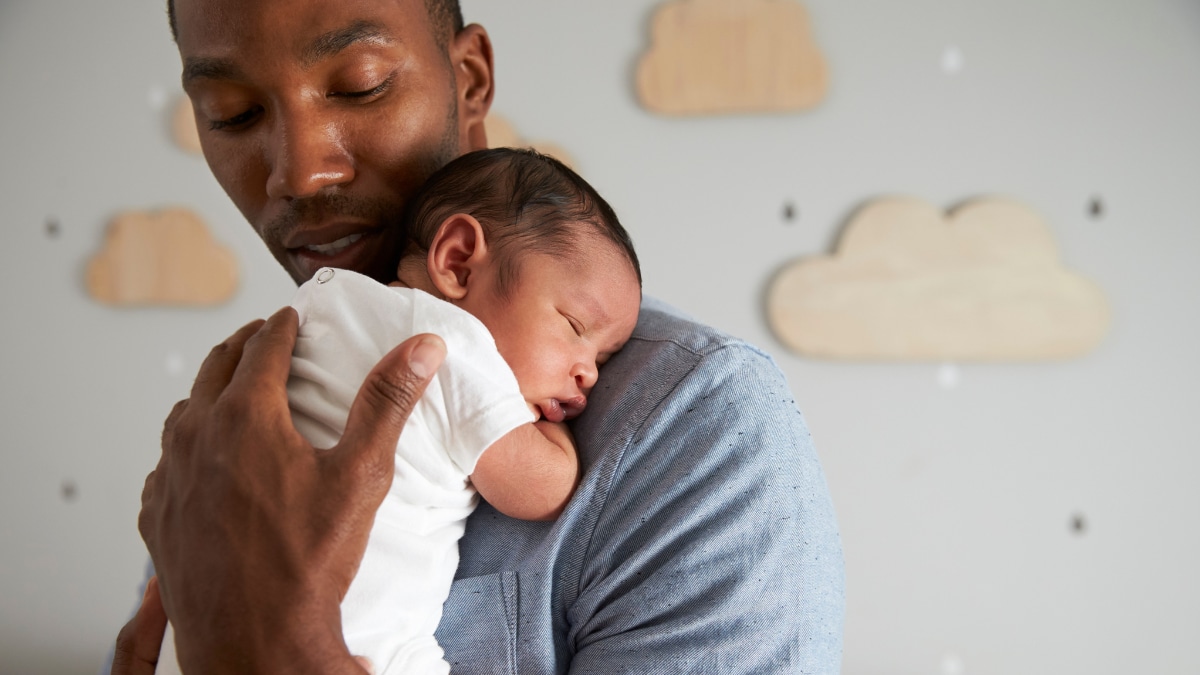What to know
In addition to CDC’s Respiratory Virus Guidance, there are several specific considerations for people who are at higher risk for severe illness, including young children.
Overview

Young children, particularly infants, have immune systems that are still developing. In addition, their lungs and airways are smaller, making viruses that affect airways more of a threat.
Why prevention is important
Studies have shown that:
- Infants under 6 months of age have similar COVID-19–associated hospitalization rates to adults ages 65–74 years old. Learn more.
- Each year in the United States, an estimated 58,000-80,000 children younger than 5 years are hospitalized due to RSV infection, with infants being among those at greatest risk. Learn more.
- Children younger than 5 years old, but especially those younger than 6 months, are at higher risk of developing serious flu-related complications. CDC estimates that from 2010 to 2020, flu-related hospitalizations among children younger than 5 years ranged from between 6,000 to 27,000 per year in the United States. Many more have to go to a doctor, an urgent care center, or the emergency room because of flu. Learn more.
Reducing risk
Immunizations
COVID-19 and flu
- Young children ages 6 months and older are recommended to get a 2024-2025 COVID-19 vaccine and an annual flu vaccine.
- Two doses of the flu vaccine (separated by at least 4 weeks) are recommended for those ages 6 months–8 years who have received fewer than 2 flu vaccine doses before July 1, 2023, or whose flu vaccination history is unknown.
- Though they are not eligible for COVID-19 or flu vaccines, infants under age 6 months can still receive some protection. Getting vaccinated while pregnant or breastfeeding can help protect your baby after birth because antibodies are passed to the baby during pregnancy or through the milk.
RSV
- To prevent severe RSV disease in infants, CDC recommends either maternal RSV vaccination while pregnant or infant immunization with RSV protective antibody. Most infants will not need both.
- Maternal RSV vaccination in pregnancy takes place during weeks 32 through 36 of pregnancy and is administered September through January in most parts of the United States. Pfizer's Abrysvo is the only RSV vaccine recommended during pregnancy.
- An RSV antibody (nirsevimab) is recommended for all babies younger than 8 months of age born to mothers who did not receive a maternal RSV vaccine (Pfizer's Abrysvo) during pregnancy. A nirsevimab dose should be given to babies shortly before the RSV season.
- Nirsevimab is also recommended for a small number of young children 8 through 19 months of age who are at increased risk for severe RSV. This nirsevimab dose should be given shortly before the child's second RSV season.
- Nirsevimab is also recommended for a small number of young children 8 through 19 months of age who are at increased risk for severe RSV. This nirsevimab dose should be given shortly before the child's second RSV season.
Hygiene
- Handwashing can become a lifelong healthy habit if you start teaching it at an early age. Teach kids the five easy steps for handwashing—wet, lather, scrub, rinse, and dry—and the key times to wash hands, such as after using the bathroom or before eating..
- Supervise young children when they use hand sanitizer to prevent swallowing alcohol.
Masks
- Masks should not be worn by children younger than 2 years because of suffocation risk.
Treatment
- Paxlovid (nirmatrelvir-ritonavir) antiviral treatment for COVID-19 is not authorized for use in children younger than 12 years of age. Other treatment may be available, speak with a healthcare provider.
- There are flu antiviral drugs recommended by CDC for use in children. Oseltamivir (available as a generic version or under the trade name Tamiflu®) is approved for treatment of flu in children 14 days old and older.
- Note: Although not part of the FDA-approved indications, use of oral oseltamivir for treatment of flu in infants less than 14 days old, and for chemoprophylaxis in infants 3 months to 1 year, is recommended by the CDC and the American Academy of Pediatrics. If a child is younger than 3 months old, use of oseltamivir for chemoprophylaxis is not recommended unless the situation is judged critical due to limited data in this age group.
- Note: Although not part of the FDA-approved indications, use of oral oseltamivir for treatment of flu in infants less than 14 days old, and for chemoprophylaxis in infants 3 months to 1 year, is recommended by the CDC and the American Academy of Pediatrics. If a child is younger than 3 months old, use of oseltamivir for chemoprophylaxis is not recommended unless the situation is judged critical due to limited data in this age group.
- To learn more about if treatment is right for your child, speak with a healthcare provider.
When Sick
- Parents and caregivers may need to be around young children at home when they are sick because they require supervision. When caring for a young child who has a respiratory virus, make use of other prevention strategies like taking steps for cleaner air, being diligent with hygiene practices, and choosing to use a mask if over age 2.
- Know that the emergency warning signs of respiratory virus complications can be different in children. Seek immediate medical care for any of the following:
- Fast breathing or trouble breathing
- Bluish lips or face
- Ribs that pull in with each breath
- Chest pain
- Severe muscle pain (for example, child refuses to walk)
- Dehydration (no urine for 8 hours, dry mouth, no tears when crying)
- Lack of alertness or interacting when awake
- Seizures
- Fever above 104 degrees Fahrenheit that is not controlled by fever-reducing medicine
- In children younger than 12 weeks, any fever
- Fever or cough that improves but then returns or worsens
- Fast breathing or trouble breathing
